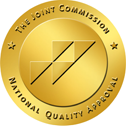Opiate addiction encompasses a wide range drugs, some illegal — like heroin — and some legal — like prescription painkillers. Sometimes opiate addiction occurs after legal use of prescription drugs slips into abuse, and sometimes it occurs as a way to experiment or escape the stress of life or childhood trauma. Whatever the case may be, opiate treatment programs will help you wean yourself off of opiates, overcome your physical and mental dependence on opiates, and address the core issues behind your substance abuse.
At Casa Palmera, we understand that opiate addiction is not just a physical problem, but a mental and emotional problem as well. Our holistic opiate treatment program will treat your entire physical, mental and spiritual health and help you identify and cope with the real reasons behind your opiate abuse.
Opiate Treatment Programs: Detoxification
The first step of opiate addiction treatment is to enter a detoxification program. The primary objective of opiate detoxification is to relieve withdrawal symptoms while the patient adjusts to a drug-free state. Opiate withdrawal can be a painful and sometimes dangerous process, which is why the detox period will be supervised by trained medical personnel who will monitor your withdrawal and make sure you are safe and as comfortable as possible. Opiate withdrawal symptoms can include extreme fatigue, flu-like symptoms, muscle and bone pain, insomnia, depression, anxiety and severe drug craving. It’s important to understand that detoxification alone is not a treatment for addiction. It is merely a useful first step to address the physical dependence to opiates so that long-term treatment can address the behaviors that have led to addiction.
Opiate Treatment Programs: Medication-Based Programs
Certain medications may be used to help minimize withdrawal symptoms, help the patient wean their body off of opiates, and help prevent relapse. The most common medications used for this are methadone, buprenorphine and suboxone.
Methadone treatment has been used effectively and safely to treat heroin and other opioid addiction for more than 30 years. If taken properly, methadone does not produce intoxicating or sedating side effects, and does not interfere with the patient’s daily activities. Most importantly, methadone relieves the intense craving of opiate addiction, which is the major cause for relapse.
Buprenorphine is a new medication for treating opiate addiction and, in many ways, is a more attractive treatment option when compared to other medications such as methadone. The main advantages of buprenorphine over other medications is that it causes weaker opiate effects, is less likely to cause overdose problems, and produces a lower level of physical dependence, which means fewer withdrawal symptoms than methadone.
Another popular medication for minimizing opiate withdrawal symptoms is suboxone. Like methadone, suboxone is a partial opiate that makes it easier for patients who are addicted to opiates to wean themselves off by reducing opiate withdrawal symptoms and craving during addiction treatment. Unlike methadone, however, suboxone is a safer substitute and it is easier for patients to stop using after treatment is over. Suboxone treatment is safe, but only if it’s done under supervised care. Overdosing or taking suboxone with alcohol, sedatives or CNS depressants can lead to severe complications that include disability and death.
Opiate Treatment Programs: Behavioral Therapies
Medication alone can be very useful when treating opiate addiction, but studies show that pharmacologic treatments combined with behavioral treatments are the most effective approach to enabling patients to stop using opiates and return to a more stable and productive life.
There are many effective behavioral treatments available for opiate addiction, including residential programs and behavioral therapies such as contingency management therapy and cognitive-behavioral therapy. Residential treatment provides round-the-clock care and support in a structured environment that’s free of temptations and distractions. Contingency management therapy uses a voucher-based system where patients can earn points based on negative drug tests and use these points to earn items that encourage healthy living. Cognitive-behavioral therapy is designed to help modify the patient’s thinking and behaviors to increase their skills in coping with stress without turning to drugs.
Opiate Treatment Programs at Casa Palmera
There are many effective opiate addiction treatment programs. The key is matching the best treatment program to the individual. At Casa Palmera, we understand that addiction is a complex disorder and that there are many reasons why a person uses drugs in the first place. We focus on individualized treatment that’s based on a holistic program that treats not only the physical dependence on opiates but also the emotional and mental issues that have fueled the drug use.
In addition to traditional methods of opiate addiction treatment, we also offer a variety of holistic methods such as acupuncture, massage (for an additional cost)and yoga to help reduce withdrawal symptoms and return the person to a balanced state of well-being. We also offer a Pain Management Program to help those with chronic pain learn to manage their pain without the use of opiate-based painkillers.
Don’t let an addiction to opiates continue to destroy your life or the life of a loved one. Call Casa Palmera today.
Related Content:




